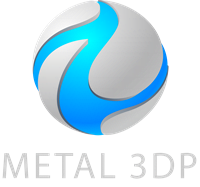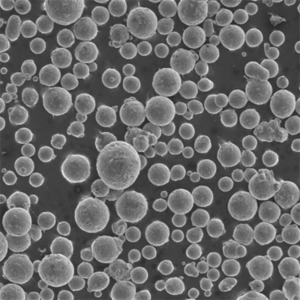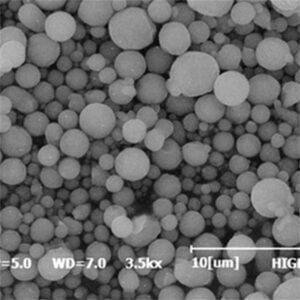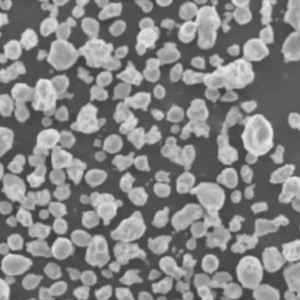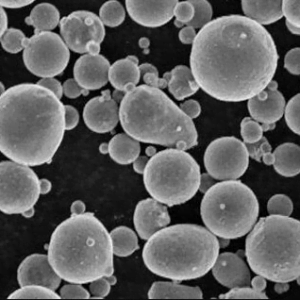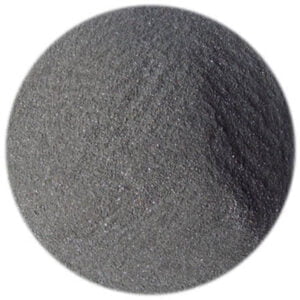In the ever-evolving world of network systems, ensuring reliable power delivery is paramount. Data centers, communication hubs, and critical infrastructure all rely on uninterrupted electricity flow to function. This is where FeSiCr, a powerful alloy composed of iron (Fe), silicon (Si), and chromium (Cr), steps onto the scene. But what exactly is FeSiCr-poeder, and how does it contribute to a network system’s strength and resilience?
Understanding FeSiCr: A Material Powerhouse
FeSiCr powder is a metal alloy meticulously crafted by combining iron, silicon, and chromium in specific proportions. This potent blend imbues the powder with a unique set of properties, making it a highly sought-after material in various applications, particularly within the realm of network systems.
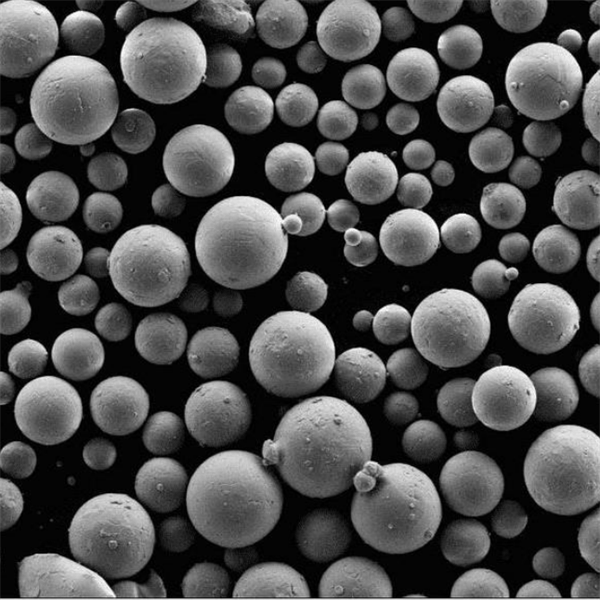
Composition, Properties, and Characteristics of FeSiCr Powders
| Eigendom | Beschrijving |
|---|---|
| Samenstelling | FeSiCr powder typically consists of 70-80% iron, 1-5% silicon, and 15-20% chromium. Variations in these percentages can tailor the powder’s characteristics for specific needs. |
| Hoge sterkte | FeSiCr boasts impressive tensile and yield strength, allowing it to withstand significant mechanical stress without deformation. This translates to robust network components that can endure harsh operating environments. |
| Excellent Oxidation Resistance | FeSiCr exhibits superior resistance to oxidation at elevated temperatures. This property is crucial in network systems, where components often generate heat, potentially leading to corrosion and performance degradation. |
| Verbeterde slijtvastheid | The presence of chromium in FeSiCr contributes to exceptional wear resistance. This is particularly beneficial for network components subject to friction and movement, ensuring extended component lifespan. |
| Goed elektrisch geleidingsvermogen | While not its primary strength, FeSiCr powder demonstrates adequate electrical conductivity, sufficient for many network system applications. |
| Magnetische eigenschappen | Depending on the specific composition, FeSiCr can exhibit either ferromagnetic or paramagnetic behavior. This characteristic can be tailored for specific network component needs. |
Applications of FeSiCr Powder in Network Systems
FeSiCr powder finds its place in a multitude of network system components, each benefiting from its unique properties. Here are some prominent examples:
| Sollicitatie | Benefits of FeSiCr Powder |
|---|---|
| Busbars and Connectors | FeSiCr’s high strength and wear resistance make it ideal for busbars and connectors, crucial components for distributing electrical power within network systems. These parts require the ability to handle significant currents without succumbing to wear and tear. |
| Heat Sinks and Dissipation Components | Due to its excellent oxidation resistance, FeSiCr powder proves valuable in heat sinks and dissipation components. This is because these elements manage heat generated by network equipment, and FeSiCr’s resistance to high temperatures ensures component longevity and efficient heat dissipation. |
| EMI/RFI Shielding | The magnetic properties of FeSiCr powder can be harnessed for electromagnetic interference (EMI) and radio frequency interference (RFI) shielding. This protects sensitive network equipment from electromagnetic disruptions, maintaining data integrity and system functionality. |
| Additive Manufacturing (AM) Applications | FeSiCr powder shines in the realm of additive manufacturing (AM) techniques like 3D printing. This allows for the creation of customized network components with complex geometries, offering greater design flexibility and potentially optimizing network system performance. |
Specifications, Sizes, and Grades of FeSiCr Powders
FeSiCr powders come in various specifications, sizes, and grades to cater to diverse network system requirements. Here’s a breakdown of some key factors to consider:
| Factor | Beschrijving |
|---|---|
| Deeltjesgrootte | FeSiCr powder particle size typically ranges from 10 to 150 microns, impacting material flowability and final component properties. Finer powders offer better surface finish but might require specific processing techniques. |
| Vloeibaarheid | The powder’s flowability determines its ease of handling and suitability for different AM or metal injection molding (MIM) techniques. High flowability ensures smooth processing and consistent component density. |
| Schijnbare dichtheid | This parameter refers to the weight of powder per unit volume. It influences material usage and packing efficiency during the manufacturing process. |
| Cijfers | Various grades of FeSiCr powder exist, with slight compositional variations tailored for specific applications. For example, some grades may prioritize wear resistance, while others might focus on improved electrical conductivity. |
Leveranciers en prijzen van FeSiCr Powders
Several leading metal powder suppliers offer FeSiCr powder in various specifications. Here’s a glimpse into some prominent players:
Pricing of FeSiCr Powders
Unfortunately, pinpointing a precise cost for FeSiCr powder is challenging due to several factors. Here’s what influences the price:
- Poederspecificaties: Particle size, flowability, and grade all play a role. Finer powders with superior flowability and specific grade characteristics generally command a higher price.
- Bestelhoeveelheid: Bulk purchases typically benefit from economies of scale, leading to lower per-unit costs compared to smaller orders.
- Marktschommelingen: Global metal prices and supply chain dynamics can impact the cost of raw materials, ultimately affecting FeSiCr powder pricing.
A Glimpse into Specific FeSiCr Metal Powders
Here’s a breakdown of ten prominent FeSiCr metal powders, highlighting their key features and potential applications within network systems:
| Metaalpoeder | Beschrijving | Network System Applications |
|---|---|---|
| AMPCOR 9740 (Höganäs AB) | This FeSiCr powder boasts a balanced composition (75% Fe, 4% Si, 21% Cr) with excellent wear resistance and high strength. | Ideal for busbars, connectors, and other components requiring exceptional mechanical durability. |
| Höganäs AMPCOR 9741 (Höganäs AB) | This variation features a slightly higher chromium content (73% Fe, 3% Si, 24% Cr) compared to AMPCOR 9740, further enhancing wear resistance. | Particularly suitable for applications encountering significant friction and wear, such as sliding contacts and moving parts. |
| Carpenter Incus 316L (Producten van het poeder van de timmermanadditieven) | Dit FeSiCr poeder heeft een samenstelling vergelijkbaar met 316L roestvrij staal (70% Fe, 1% Si, 19% Cr, met toevoegingen van Ni en Mo). Het heeft een uitstekende corrosiebestendigheid en biocompatibiliteit. | Hoewel dit niet specifiek is voor netwerksystemen, zou dit poeder waardevol kunnen zijn voor netwerkcomponenten die mogelijk worden blootgesteld aan ruwe omgevingen of die een bepaalde mate van biocompatibiliteit vereisen. |
| AM BASF AMثير (AMBASF) (BASF) | Dit FeSiCr-poeder van BASF heeft een unieke naam ("AMثير" betekent "AM Power" in het Arabisch) en heeft een hoge sterkte naast een goede vloeibaarheid. | Zeer geschikt voor AM-toepassingen in netwerksystemen vanwege het verwerkingsgemak en de sterke mechanische eigenschappen. |
| SLM-oplossingen FeSiCr15 (SLM Oplossingen) | Dit aanbod van SLM Solutions geeft voorrang aan een evenwicht tussen sterkte en elektrisch geleidingsvermogen (75% Fe, 3% Si, 17% Cr, met toevoegingen van Mn). | Een potentiële keuze voor netwerkcomponenten die zowel structurele integriteit als adequate elektrische prestaties vereisen. |
| LPW FeCrSi (LPW Technologie) | Het FeCrSi poeder van LPW Technology biedt een standaardsamenstelling (75% Fe, 4% Si, 21% Cr) met goede algemene eigenschappen. | Een veelzijdige optie voor diverse netwerksysteemtoepassingen waar een balans van sterkte, slijtvastheid en oxidatiebestendigheid gewenst is. |
| EOS M 290 (EOS GmbH) | Dit FeSiCr-poeder van EOS heeft een iets lager chroomgehalte (73% Fe, 3% Si, 19% Cr) dan sommige concurrenten. Het biedt echter een uitstekende verwerkbaarheid voor AM-technieken. | Een goede keuze voor onderdelen van netwerksystemen die zeer nauwkeurig 3D geprint moeten worden en waarbij productiegemak prioriteit heeft. |
| AMBIT FeSiCr (AMBIT-poeder) | Dit FeSiCr-poeder van AMBIT Powder focust op een evenwichtige samenstelling (73% Fe, 3,5% Si, 19,5% Cr) met goede algemene eigenschappen voor diverse toepassingen. | Een andere veelzijdige optie voor verschillende netwerksysteemcomponenten waar een balans van functionaliteiten gewenst is. |
| Proto Labs FeSiCr (Proto Labs) | Proto Labs biedt een standaard FeSiCr poeder met een typische samenstelling (75% Fe, 4% Si, 21% Cr). | Een direct beschikbare optie voor het maken van prototypes van netwerksysteemcomponenten met behulp van AM-technieken. |
| ExOne FeSiCr (ExOne) | ExOne's FeSiCr poeder geeft voorrang aan printbaarheid voor binder jetting AM technieken. Details over de specifieke samenstelling zijn niet direct beschikbaar. | Mogelijk goed geschikt voor netwerksysteemcomponenten die zijn vervaardigd via binder jetting AM, gezien de focus op bedrukbaarheid. |
Voordelen en nadelen van FeSiCr-poeders voor netwerksystemen
FeSiCr-poeder biedt een overtuigend voorstel voor netwerksysteemtoepassingen, maar het is essentieel om de sterke en zwakke punten ervan te begrijpen om weloverwogen beslissingen te kunnen nemen.
Voordelen:
- Uitzonderlijke sterkte en slijtvastheid: FeSiCr blinkt uit op deze gebieden, waardoor het ideaal is voor componenten zoals stroomrails en connectoren die aanzienlijke elektrische stromen en potentiële slijtage verwerken.
- Superieure weerstand tegen oxidatie: Netwerkapparatuur genereert vaak warmte en de weerstand van FeSiCr tegen oxidatie bij hoge temperaturen zorgt voor een lange levensduur van componenten en efficiënte warmteafvoer in koellichamen en afvoercomponenten.
- Verbeterde EMI/RFI afscherming: De magnetische eigenschappen van FeSiCr kunnen worden benut om een effectieve afscherming tegen elektromagnetische en radiofrequente interferentie te creëren, zodat gevoelige netwerkapparatuur wordt beschermd tegen storende elektromagnetische golven.
- Veelzijdigheid in Additive Manufacturing: FeSiCr-poeder blinkt uit in AM-technieken, waardoor ingewikkelde netwerkcomponenten met complexe geometrieën kunnen worden gemaakt. Dit bevordert de ontwerpflexibiliteit en optimaliseert mogelijk de systeemprestaties.
- Verbeterde duurzaamheid: Vergeleken met traditionele fabricageprocessen die veel afval genereren, kunnen AM-technieken met FeSiCr-poeder een duurzamere aanpak bieden, waarbij mogelijk minder materiaal wordt verspild.
Nadelen:
- Kosten: FeSiCr poeder kan duurder zijn dan sommige traditionele materialen die in netwerksystemen worden gebruikt. Factoren zoals deeltjesgrootte, vloeibaarheid en kwaliteit hebben allemaal invloed op de prijs.
- Beperkt beschikbaar: Hoewel FeSiCr-poeder gemakkelijk verkrijgbaar is bij grote leveranciers, is het misschien niet zo wijdverbreid verkrijgbaar als sommige veelgebruikte netwerksysteemmaterialen.
- Verwerkingsoverwegingen: AM-technieken met FeSiCr-poeder vereisen mogelijk gespecialiseerde apparatuur en expertise in vergelijking met traditionele productiemethoden.
De juiste keuze maken FeSiCr poeder voor uw netwerksysteembehoeften
De keuze van het optimale FeSiCr-poeder hangt af van verschillende factoren die specifiek zijn voor de vereisten van je netwerksysteem:
- Component Functionaliteit: Denk na over de primaire functie van het onderdeel. Is sterkte, slijtvastheid, elektrische geleiding of een combinatie ervan belangrijk?
- Manufacturing Technique: Will you be using AM techniques or traditional methods? Different FeSiCr powders cater to specific AM processes.
- Kostenoverwegingen: Balance the cost of the powder with its performance benefits and the overall project budget.
- Complex ontwerp: If your network component requires intricate geometries, AM with FeSiCr powder might be a perfect fit.
Consulting with a qualified metal powder supplier and a network system engineer is highly recommended. They can guide you through the selection process, ensuring you choose the most suitable FeSiCr-poeder for your specific application.
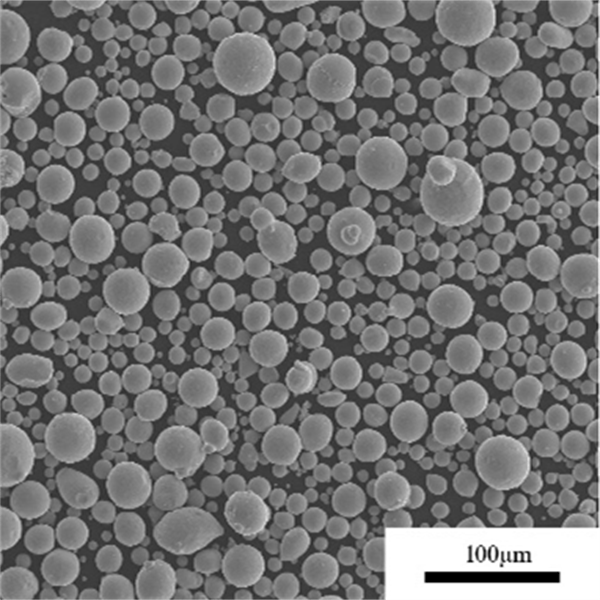
Veelgestelde vragen
Q: Is FeSiCr powder safe to handle?
A: While generally safe, proper handling procedures for metal powders are recommended. This includes wearing appropriate personal protective equipment (PPE) like gloves, safety glasses, and a respirator when handling the powder in bulk.
Q: Can FeSiCr powder be recycled?
A: Yes, depending on the specific composition and any contaminants. Some AM techniques allow for the recycling of unprinted FeSiCr powder, potentially reducing waste and promoting sustainability.
Q: How does FeSiCr powder compare to other materials used in network systems?
A: Traditional materials like copper offer superior electrical conductivity, but FeSiCr excels in strength, wear resistance, and oxidation resistance. Aluminum offers lightweight properties, but FeSiCr boasts greater mechanical strength. The choice ultimately depends on the specific needs of the network component.
Q: What is the future outlook for FeSiCr powder in network systems?
A: As network systems become increasingly complex and require enhanced reliability, FeSiCr powder is poised to play a more prominent role. Advancements in AM technology and the potential cost reduction of FeSiCr powder could further solidify its position as a valuable material for future network infrastructure.
